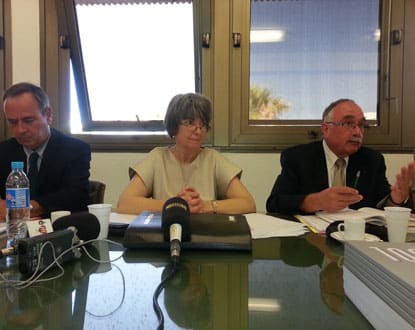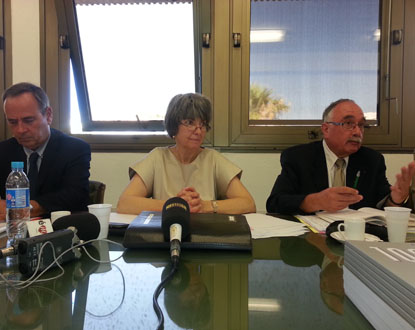On the eve of the school year, Claire Lovisi, the Rector of the Nice Academy, held a press conference regarding the 2014/2015 school year. It promises to be a year full of projects and innovations, designed and implemented for the benefit of the students. While the Mayor of Nice, Christian Estrosi, continues to fiercely oppose the reform of school rhythms, Claire Lovisi remains “calm and vigilant.”

“The success rate for the baccalaureate is improving (+1.3%). Furthermore, the number of dropouts is steadily decreasing: between March 2013 and March 2014, the number of young people leaving the educational system without a diploma decreased by 21%. However, these efforts must continue because all students must be able to succeed. In the fight against school dropout, we have implemented two main measures: prevention and remediation. They are applied through solutions that allow students to reintegrate into the educational system,” explains the Rector of the Nice Academy.
The reform of school rhythms encompasses teaching, organization, and also the educational method. According to research, children are more receptive in the morning. Fundamental learnings would therefore be more efficient if taught in the morning. According to Claire Lovisi, “teachers are unanimous, children learn better in the morning. This is about raising the level of our children. The Nice Academy is working to reduce not only social inequalities but also territorial ones. The school must offer the best learning conditions to everyone. Moreover, it is normal that when changes are made, there is an adaptation period.”
The academy inspector of Var, Jean Verlucco, highlighted the importance of “optimizing students’ learning time. We must remember that the 24 hours of classes remain. They are reorganized to be optimized and beneficial for students.”
To carry out these actions successfully, resources need to be deployed. With the rising number of students enrolled in the department, 130 additional teaching positions have been created along with 60 future teachers’ jobs. “We have a top-quality territorial educational project. To enhance the effectiveness of our actions, we offer children complementary educational activities. These aim to minimize the achievement gaps among students,” Claire Lovisi enthuses.
Regarding technical high school graduates, efforts to align training with employment opportunities are underway. For this, the Nice Academy has studied the potential barriers to employment faced by young people. The main concerns raised by employers include lack of experience and inadequate training. To address this situation, the Nice Academy is working on improving training. It focuses on making the training offer attractive: a key factor in leading all students to success.



